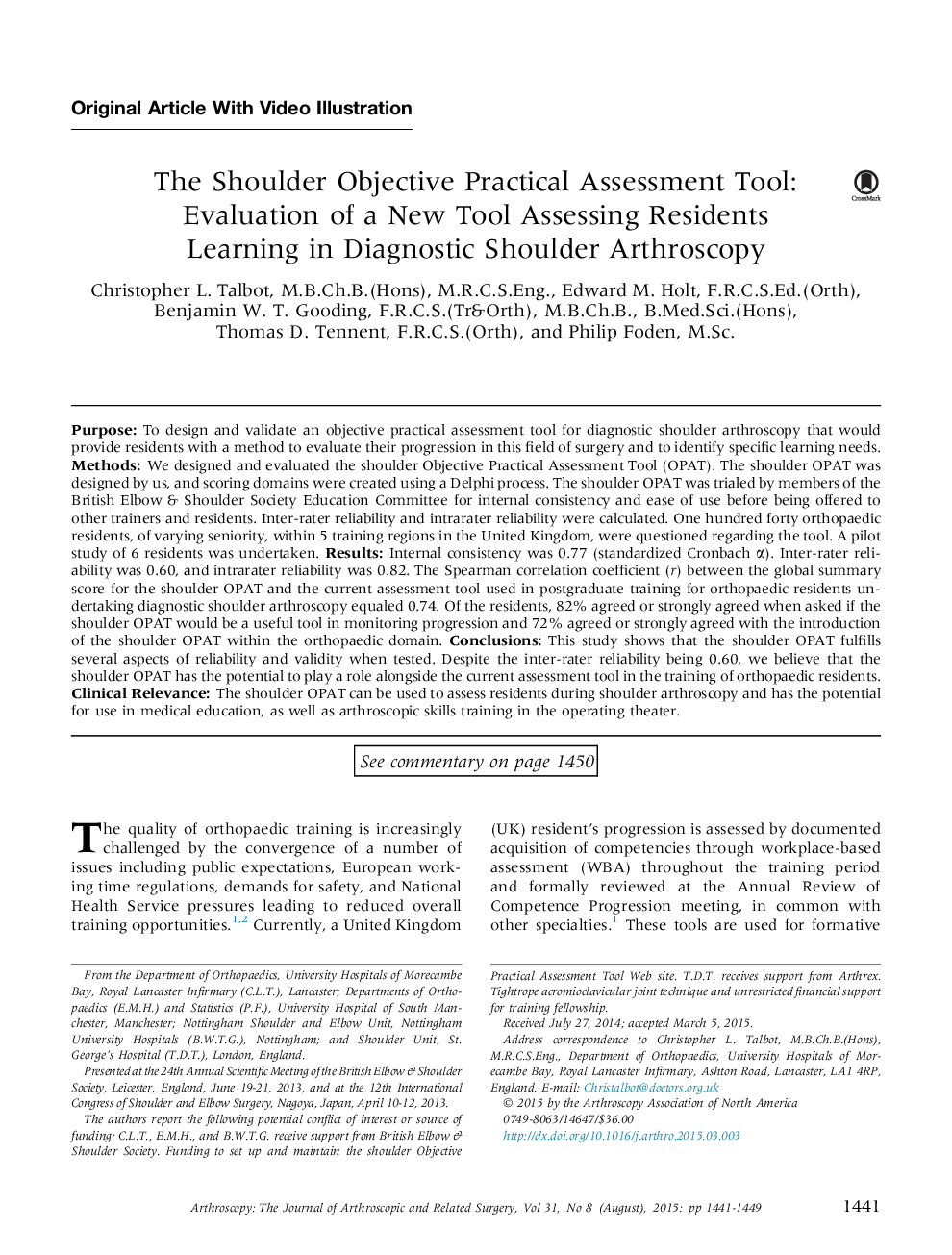| Article ID | Journal | Published Year | Pages | File Type |
|---|---|---|---|---|
| 4042202 | Arthroscopy: The Journal of Arthroscopic & Related Surgery | 2015 | 9 Pages |
PurposeTo design and validate an objective practical assessment tool for diagnostic shoulder arthroscopy that would provide residents with a method to evaluate their progression in this field of surgery and to identify specific learning needs.MethodsWe designed and evaluated the shoulder Objective Practical Assessment Tool (OPAT). The shoulder OPAT was designed by us, and scoring domains were created using a Delphi process. The shoulder OPAT was trialed by members of the British Elbow & Shoulder Society Education Committee for internal consistency and ease of use before being offered to other trainers and residents. Inter-rater reliability and intrarater reliability were calculated. One hundred forty orthopaedic residents, of varying seniority, within 5 training regions in the United Kingdom, were questioned regarding the tool. A pilot study of 6 residents was undertaken.ResultsInternal consistency was 0.77 (standardized Cronbach α). Inter-rater reliability was 0.60, and intrarater reliability was 0.82. The Spearman correlation coefficient (r) between the global summary score for the shoulder OPAT and the current assessment tool used in postgraduate training for orthopaedic residents undertaking diagnostic shoulder arthroscopy equaled 0.74. Of the residents, 82% agreed or strongly agreed when asked if the shoulder OPAT would be a useful tool in monitoring progression and 72% agreed or strongly agreed with the introduction of the shoulder OPAT within the orthopaedic domain.ConclusionsThis study shows that the shoulder OPAT fulfills several aspects of reliability and validity when tested. Despite the inter-rater reliability being 0.60, we believe that the shoulder OPAT has the potential to play a role alongside the current assessment tool in the training of orthopaedic residents.Clinical RelevanceThe shoulder OPAT can be used to assess residents during shoulder arthroscopy and has the potential for use in medical education, as well as arthroscopic skills training in the operating theater.
